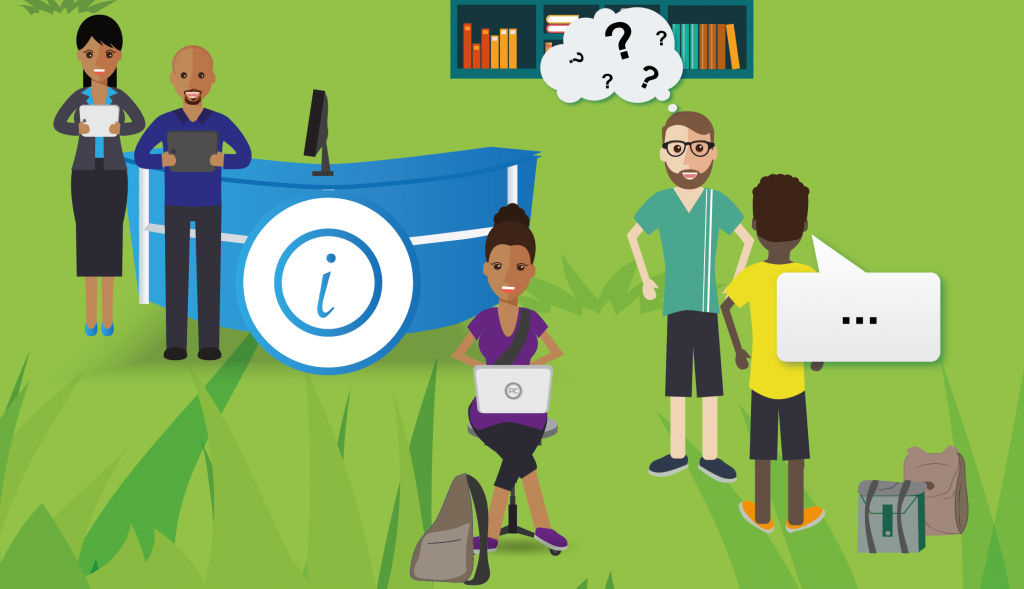The UCT MOOCs project set out to create 12 Massive Open Online Courses (MOOCs) with several goals – one of which is to make UCT’s knowledge resources globally accessible. To that end, most of the materials were licensed to allow sharing – through creative commons licensing which facilitates legal reuse. There has also been a great deal of effort put into providing multiple formats of materials to increase possible reuse. For example, every video has subtitles and a downloadable transcript. In the Education for All: Disability, Diversity and Inclusion course, the educators also added separate audio files to increase accessibility.
As the courses are running, we have been capturing the stories of some of the participants who sign up and find value in the courses. You can view the MOOC Learner Stories collection on the CILT YouTube channel.
In this blog post, we will feature learner experiences which focus particularly on the reuse of material for inspiring or enabling new teaching approaches. From among the many stories we have chosen to share cases from two of our courses hosted on FutureLearn – Extinctions: Past and Present and Education for All: Disability, Diversity and Inclusion.
Finding inspiration for teaching from the Extinctions course
Extinctions: Past and Present is a course in the field of paleobiology which explores how life on earth has been shaped by five mass extinction events in the distant past. At present, biodiversity is facing a crisis, with the prospect of a sixth extinction event today. The course was developed with a general science communication purpose but as is usual with open courses, attracts a variety of participants including specialists and those involved in education.
Two such specialists are Aviwe Matiwane and Dr Rose Prevec from Grahamstown, South Africa who work in the field of paleontology at the Albany Museum.
Dr Rose Prevec is a paleobotanist and holds the post of Creator and Head of the department of Earth Sciences at the museum. She took the course to see how the subject was being taught in the MOOC, and was really excited about the learning experience.
I am used to the very dry reading of manuscripts and papers and learning information the hard way; having to ferret out information myself. And to have these amazing things laid out in different forms and hearing researchers speak about their work in person and then seeing graphics and having the information reaffirmed in the text was wonderful. It was so easy to absorb that information.
The interviews were so nicely done — they were conversational and also so informative. That relax lovely atmosphere that Anusuya always conveys made the course very engaging and not intimidating at all.
Dr Prevec enjoyed the course and was inspired by some of the methods – using mixed modes (for example, graphs; lectures; texts; links to other readings). She is planning to use some of the material in her own teaching.
What I really got from the course was more about, teaching methods. I do give some courses in paleontology and the kinds of things/ highlights of bits of information that came out – show me areas that I could include in my courses. I will definitely use some of that information in beefing up my courses.
Aviwe Matiwane, is a PhD student at Rhodes University, based at the Albany Museum and she also took the Extinctions MOOC. Once again, Aviwe already has a degree in this field but found the MOOC to be a useful refresher. As a young educator herself – she is tutoring at Rhodes University, it was a really quick and easy way to revise material which she needs to be familiar with for her undergraduate students.
I had forgotten what I had learnt in undergrad so it was a refresher course. For example, I tutor cell biology and we do some parts of extinction, and it [the MOOC] actually increased my knowledge.
Prof Anusuya Chinsamy-Turan did short interviews with researchers who offered a few insights about their work, and participants on the course loved getting ‘to know’ the researchers behind the academic work which informs this field. Dr Prevec also commented on this aspect – as a way of making research ‘come alive’. This can be a powerful teaching and communications tool.
The extinctions course was wonderful because we got exposed to different researchers in different fields. There is a difference between reading something online and actually having the researcher or professional talk to you about it.
Developing understandings of Disability and Inclusion in education
Another UCT course, Education for All: Disability, Diversity and Inclusion was developed specifically to offer support to teachers. It was designed as a form of professional development to help teachers see possibilities for inclusion of disabled children in mainstream classrooms even in low-resourced environment. Many participants have responded to the material as teachers. But we have other participants finding educational value in the course.
Benedict Leteane enrolled on the course in 2016 when he was looking for information about how to mainstream inclusive practices in higher education. Taking the MOOC exposed him to the idea of disability as a field of academic study. He strongly believes all teacher education should include a core module on disability and inclusion.
As much as I have a disability [Benedict has a visual impairment], there is more that I don’t know about disability. Also being involved in disability organisations, we are trying to be activists, but we need to learn more. I never thought that I could study disability – I thought for what would I study this, as I have a disability. But when I looked at the MOOC, and how meaningful it was, I thought I should study disability and take it as a career. Looking at it as an academic field of study – compared to other fields.
Benedict is now enrolled in a PG Diploma in Disability Studies at UCT – in the same department which made the MOOC!
Claire Ozel, on the other hand, who based at the Middle East Technical University in Turkey is involved in teacher education. She appreciated the content of the Education for All: Disability, Diversity and Inclusion MOOC because of its explicit focus on low resource settings.
When I started out, I was looking for examples [of inclusive practices in education] and the only examples I knew about were from the UK and the US and those examples were not transposable and then you are left high and dry. But the wide variety of examples which the MOOC gives from different countries and different situations in Africa. People will look at those and say, “oh, I can do that”. And that is giving people the confidence to have a go. That is what is important.
Claire emphasises the importance of having material which people can relate to and she points out that you can never know what people will need because it is open to everyone, whose context those designing the MOOC can’t know in detail. She is also very mindful of the need to provide access to learning resources, not just a course, because not everyone wants to follow the full six week course schedule.
We essentially need to get this material out. The MOOC is fantastic if you want to take a regular course and be guided. When you prepare the MOOC, you don’t know which parts of the MOOC will be relevant to whom, because you have no idea who will be taking it. So for instance, one person will say: ‘ah, that child (described in the MOOC), didn’t I have a child like that in my class? And someone else will be saying my little two-year old is going to be growing up and in three years time that child will be needing to go to school and who do i need to speak with? And so that is where the material in the 5th and 6th week is really important.
The UCT MOOC project shares the course materials as Open Education Resources (OER), so as to increase the usefulness of MOOCs beyond a course experience. This encourages participants to find their own uses of the course and course materials in the way in which Claire has indicated above.
As the UCT MOOCs project reaches completion, through research, the team will be exploring further what value participants have found in the courses.


